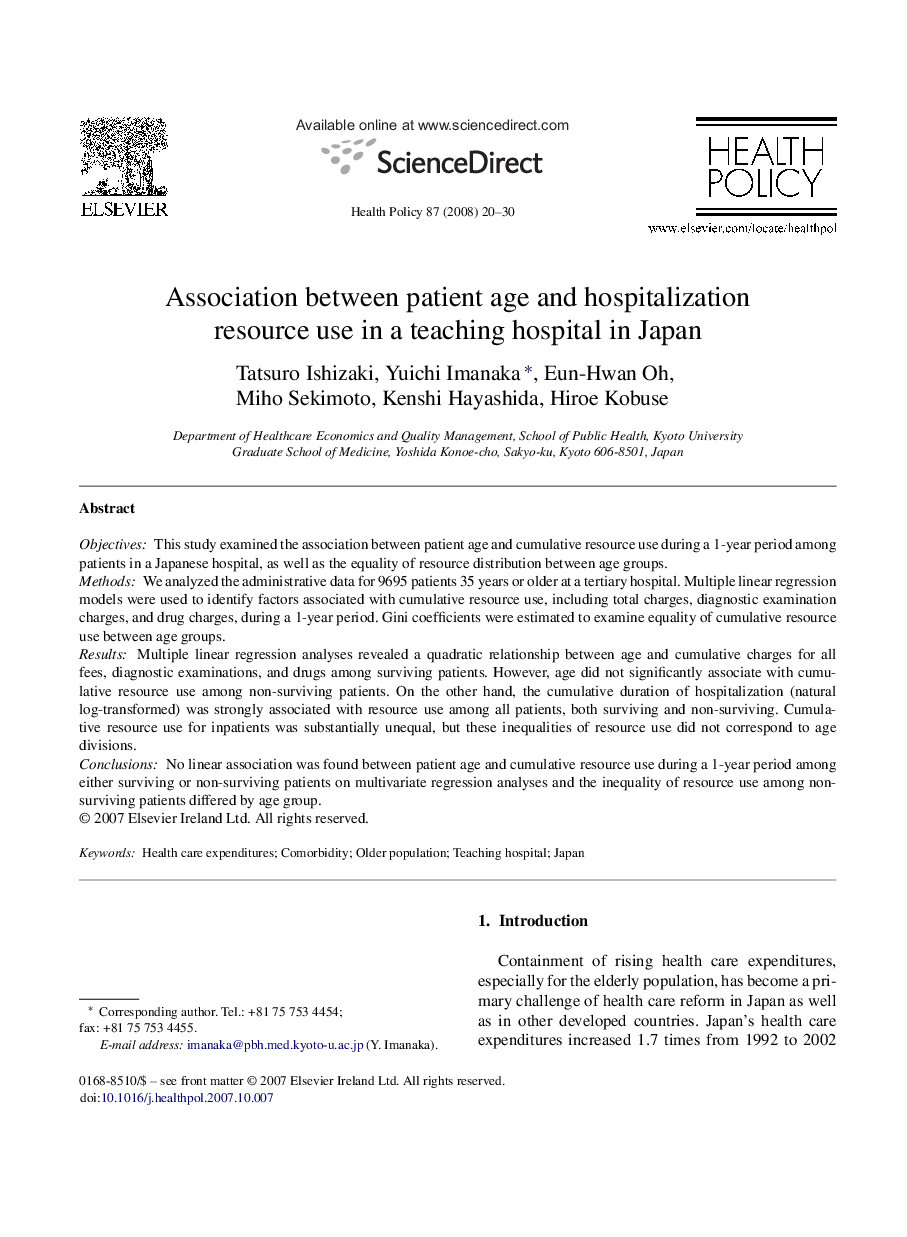| Article ID | Journal | Published Year | Pages | File Type |
|---|---|---|---|---|
| 4198694 | Health Policy | 2008 | 11 Pages |
ObjectivesThis study examined the association between patient age and cumulative resource use during a 1-year period among patients in a Japanese hospital, as well as the equality of resource distribution between age groups.MethodsWe analyzed the administrative data for 9695 patients 35 years or older at a tertiary hospital. Multiple linear regression models were used to identify factors associated with cumulative resource use, including total charges, diagnostic examination charges, and drug charges, during a 1-year period. Gini coefficients were estimated to examine equality of cumulative resource use between age groups.ResultsMultiple linear regression analyses revealed a quadratic relationship between age and cumulative charges for all fees, diagnostic examinations, and drugs among surviving patients. However, age did not significantly associate with cumulative resource use among non-surviving patients. On the other hand, the cumulative duration of hospitalization (natural log-transformed) was strongly associated with resource use among all patients, both surviving and non-surviving. Cumulative resource use for inpatients was substantially unequal, but these inequalities of resource use did not correspond to age divisions.ConclusionsNo linear association was found between patient age and cumulative resource use during a 1-year period among either surviving or non-surviving patients on multivariate regression analyses and the inequality of resource use among non-surviving patients differed by age group.
